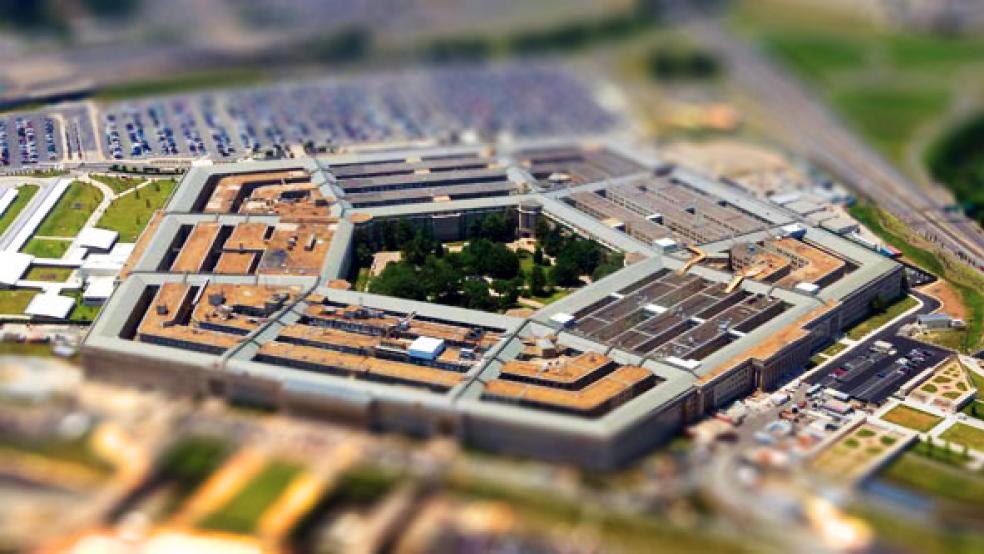The Defense Department has been pressing for years to close unneeded bases in the U.S., which would save billions and help gradually downsize and reconfigure the military. But that campaign has been mostly greeted with hostility on Capitol Hill.
Last March, for example, Pentagon officials argued before a Senate panel that a new Base Realignment and Closure (BRAC) round would pay off handsomely, producing $2 billion a year in savings by shrinking the infrastructure by only five percent, according to the Military Times.
Related: The Battle Is On to Save Military Bases from Closure
But influential Republicans including Sen. Kelly Ayotte of New Hampshire, chair of the Armed Services readiness subcommittee, lashed back, noting that the last BRAC in 2005 cost the government $35 billion and yet produced little in the way of savings. “Now is not the time to spend billions of up-front dollars on another BRAC round, especially as costs for the last one have dramatically exceeded expectations,” she said
Just in case the Defense Department and the White House didn’t get the message, the GOP-controlled Congress inserted unmistakable language in the $1.1 trillion omnibus spending bill for fiscal 2016 barring DOD from planning another massive shutdown of military bases. “None of the funds made available by this Act may be used to propose, plan for, or execute a new additional Base Realignment and Closure (BRAC) round,” states the legislation, which is awaiting final approval by the House and Senate.
“Normally, Congress just tells an agency that they can’t spend money to do this or that,” said Steve Ellis, vice president of Taxpayers for Common Sense. “But telling the Pentagon that they can’t spend money to propose a BRAC is the legislative equivalent of ‘don’t even think about it.’ The Administration can’t even put it in their Fiscal Year 2017 budget request next year.”
It has been a full decade since Congress last authorized a major downsizing of the military’s U.S. footprint. More than 350 installations have been closed in five BRAC rounds dating back to 1988. In an effort to insulate the decision making from politics, Congress in the past has left the nitty gritty of deciding which bases to preserve and which to close to an independent commission, and then voted to approve or reject the overall recommendations.
Related: $55 to $75 Billion--Guess How Much the New Stealth Bomber Will Cost
Given the steady decline in the number of troops and civilian workers, there is less and less of a need to maintain many sprawling and costly bases and military installations in the country. The Defense Department at one time estimated its excess or surplus infrastructure at between 18 percent and 30 percent, according to The Fiscal Times. The Pentagon’s vast real estate portfolio includes more than 562,000 buildings and structures on 523 bases, posts and centers.
At a time when Defense Secretary Ashton Carter and Gen. Joseph Dunford, the chair of the Joint Chiefs of Staff are pressing to streamline the military and reorganize combat commands, administration officials, defense budget analysts and others are dismayed by the staunch congressional resistance to downsizing the infrastructure. This is especially alarming when the Pentagon is being showered with so much money -- $572.6 billion alone in fiscal 2016 – while little is being done to crack down on waste or adequately audit spending.
However, lawmakers argue that the timing is wrong for another BRAC amid widespread public concern about defense and the threat of ISIS terrorists. And they say that the last downsizing during the administration of Republican President George W. Bush in 2005 provided a cautionary note about the limits to savings that can be achieved by closing bases.
Mostly, House and Senate members don’t like base-closures because they are politically divisive – pitting one state against another – and they can lead to the loss of jobs and economic opportunity in their states that could become an issue during an election. Ayotte, for example, is facing a tough challenge next year from Democratic Gov. Maggie Hassan and can’t afford to appear willing to risk a base closing in New Hampshire.
Related: U.S. Weapons Worth $500 Million Vanish in Yemen
“Congressmen don’t want bases closed in their districts, it’s as simple as that,” said Gordon Adams, a professor emeritus at American University and an authority on defense spending and strategy. “And that’s almost entirely what it is. The military brass would love to close bases; they would love to get the savings from consolidating infrastructure for things that they really want. They know they have too much infrastructure.”
However, the controversy isn’t cut and dried. When the last BRAC was considered and approved in 2005, the Pentagon estimated similar excess capacity to what it is claiming now, according to reports. Congress ultimately approved reducing military infrastructure by less than 3.5 percent, but at a cost of a startling $35 billion to achieve. The annual savings from that huge investment turned out to be roughly $4 billion.
Ever since then, opponents of more base closures cite the Bush administration’s costly experiment. Yet Adams said that the 2005 BRAC was different from earlier efforts because “they did more realignment than they did closure.”
Related: Army’s Plans to Cut 60,000 Could Be a Major Blow to the Economy
“What that means is taking forces from point A and grouping with them with forces at point B, consolidating bombers, consolidating fighter aircraft,” he said. “They didn’t close very many bases. But they had to do a lot of spending to reconfigure bases so that they could receive the incoming material and people.”
“Members of Congress hide behind that cost to oppose any future base closure rounds,” he added.





